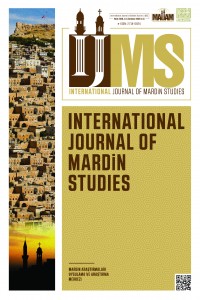
International Journal of Mardin Studies
Yazarlar: ["Özlem KARAKAYA BİLEN", "Necla KAPLAN"]
Konular:-
Anahtar Kelimeler:Nusaybin,Mor Yakup Kilisesi,Orta Çağ,Figürlü Sırlı Seramikler
Özet: A large number of artifacts belonging to different periods were obtained from the excavations carried out intermittently between 2000 and 2016 around the Mor Yakup Church. The various ceramics were also found during the excavations in question. In this article, the patterns of glazed ceramics with human and fantastic figures, which are interesting among the variety of ceramics found in the Mor Yakup Church excavations, are evaluated. Glazed ceramics, which constitute an important group of findings among the artifacts obtained from the Mor Yakup Church excavations in the Nusaybin District of Mardin Province, are preserved in the Mardin Museum. The mentioned ceramics have not been dealt with in an academic study, but a few excavation reports. It is important to reveal the works that are thought to be important for the history and culture of the region and to introduce them to the scientific world. The fact that the terracotta artifacts can survive from prehistory to the present constitutes concrete data for a more comprehensible interpretation of the periods. The patterns made on the ceramic surface offer clues about the production period of the ceramic. In the light of this information, the glazed ceramics with figures of the Mor Yakup Church, which attract attention with their rarity in terms of ornamentation program, display the style and technical understanding seen in the ceramic samples of the 12th-13th century. It is understood that in the seven works examined, figurative motifs were processed in champleve and sgraffito techniques after cream slip was applied on brick-colored paste and finally they were decorated with green, brown and transparent glaze.